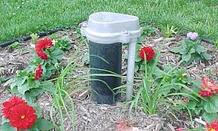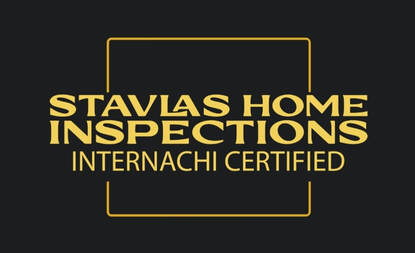- HOME
- QUALIFICATIONS
-
SERVICES
- General Home Inspection - Buyer
- Pre-Listing Home Inspection - Seller
- Radon Gas Testing
- Walk and Talk Consultation - Pre-Offer
- Swimming Pool Inspection
- New Construction Inspections
- Termite/ WDI Inspection
- Well Yield Testing
- Sewer Scope Inspection
- Camera Septic Evaluation
- Water Quality Testing
- Thermal Infrared Scan
- Baltimore County Rental Inspection - Licensed Rental Inspector
- Baltimore City Rental Inspections
- SERVICE AREA
- CONTACT US
- SAMPLE REPORT
- KNOWLEDGE BASE
- FAQs
- HOME
- QUALIFICATIONS
-
SERVICES
- General Home Inspection - Buyer
- Pre-Listing Home Inspection - Seller
- Radon Gas Testing
- Walk and Talk Consultation - Pre-Offer
- Swimming Pool Inspection
- New Construction Inspections
- Termite/ WDI Inspection
- Well Yield Testing
- Sewer Scope Inspection
- Camera Septic Evaluation
- Water Quality Testing
- Thermal Infrared Scan
- Baltimore County Rental Inspection - Licensed Rental Inspector
- Baltimore City Rental Inspections
- SERVICE AREA
- CONTACT US
- SAMPLE REPORT
- KNOWLEDGE BASE
- FAQs
|
Seller's Pre-Listing InspectionEventually, prospective buyers are going to conduct a home inspection. As a seller, you may as well know what they are going to find by getting there first. Having an inspection performed ahead of time helps in many other ways, such as:
12/20/2022 Private Water Well Information Well Inspection For information on private water well systems and well owner resources, visit Wellowner.org. Download a copy of the National Ground Water Association NGWA) Well Owners Guide. The Well Owners Guide is a comprehensive manual where you will find valuable information regarding proper well construction, routine well maintenance, water testing, and much more. Wellhead and Well Cap Check the wellhead (the part of the well that is above ground) and the well cap (the part that covers the wellhead) several times a year. Look at the wellhead casing and cap for any cracks or openings that should not be there. The cap keeps rainwater, pathogens, insects, and small animals from going into the well. If you find problems, contact a qualified water well service, well treatment, or well-drilling contractor. To find a qualified contractor in your area, visit Find Water Well Service Near Me - Water Well Contractor Directory - Wellowner.org. Well System Have a qualified water well service, well treatment, or well-drilling contractor inspect the well system every 10 years or as needed. The inspection will include the condition of the well, well pump, storage/ expansion tank, plumbing, and valves. When it is time for a new well, contact a qualified well-drilling contractor for installation and to properly abandon (plug or seal) the old well. Look around your well to see if items or materials are nearby that could impact your well. · Do not store, use, or dump harmful materials such as paint, fertilizer, pesticides, and motor oil near the wellhead. If you do use lawn fertilizer, follow the application instructions. Do not over apply near the wellhead. · Keep the top of your wellhead 8-12 inches above the ground. Slope the ground away from the wellhead to keep water from ponding near the wellhead. · Do not plant shrubs and trees near the well. · Be certain enough clearance around the wellhead for maintenance and/or for pump replacement. Never build a deck or porch over a wellhead. Buildings should be at least 3 feet from the wellhead. · Keep dog kennels or animal holding areas at least 50 feet from your well. · If your home has a septic system, it is important to maintain it. Poor maintenance can lead to contaminants finding their way into your drinking water. Routine Well Maintenance Regular maintenance is recommended for your well, including water testing and inspection. Having a maintenance routine will keep you informed of your drinking water quality and possibly identify problems. Water Quality TestingHomeowners are required to test their drinking water for coliform bacteria when a well is installed. Consider testing your drinking water if flooding has happened near your well, your well has had repairs, or you notice changes in your water’s taste, color, or odor. Homeowners should test: · Every year for coliform bacteria, E. coli, nitrate, and nitrite · Every three to five years for arsenic, copper, and lead · Check with your local health department to see if there are other times you need to test your drinking water. They may recommend other testing based on water conditions in the area. Well Performance The rate at which a well pumps groundwater (called well yield) can decrease over time for many reasons. Work with a registered well drilling contractor to find and correct the problem if there is a noticeable decrease in well yield. Possible reasons for a decrease in well yield could be: · Buildup of mineral deposits in a well · Buildup of microorganisms such as bacteria · Sand is being pulled into the well by the well pump · Well screen or casing corrosion · Parts of the well system not working correctly (pressure switch and pump failure) Water Treatment Water treatment could include disinfecting your well or installing a filtration system. Contact your local health department or a well service or treatment provider to discuss the best option before starting treatment. · If water treatment is needed, be sure to test the water for the contaminant of concern before and after treatment. This will tell you if the treatment is working correctly. · If disinfection is necessary, contact a qualified water well service, well treatment, or well-drilling contractor to properly disinfect the well. · Select a water filtration system certified by NSF International (NSF | The Public Health and Safety Organization) to reduce or remove the contaminants in your well. · Follow the recommended inspection and maintenance routine for your treatment system. Well Documentation All wells constructed in Maryland must be installed by a licensed well-drilling contractor. Once the well is constructed, the well driller must submit a well-completion report to the County health department. The report provides the details of the well construction (depth drilled, length of casing, screen installed, etc.) as well as a description of the sediment drilled through and well yield information. A copy of the well completion report can be obtained through the County health department by referencing the well tag numbers attached to the well casing. For more information, visit Information about your well (md.gov). To obtain a copy of your well completion report, visit Obtaining Your Well Records (md.gov) . |
AuthorJohn G. Stavlas has been performing home inspections for over 5 years. ArchivesCategories |


 RSS Feed
RSS Feed
12/29/2022
0 Comments